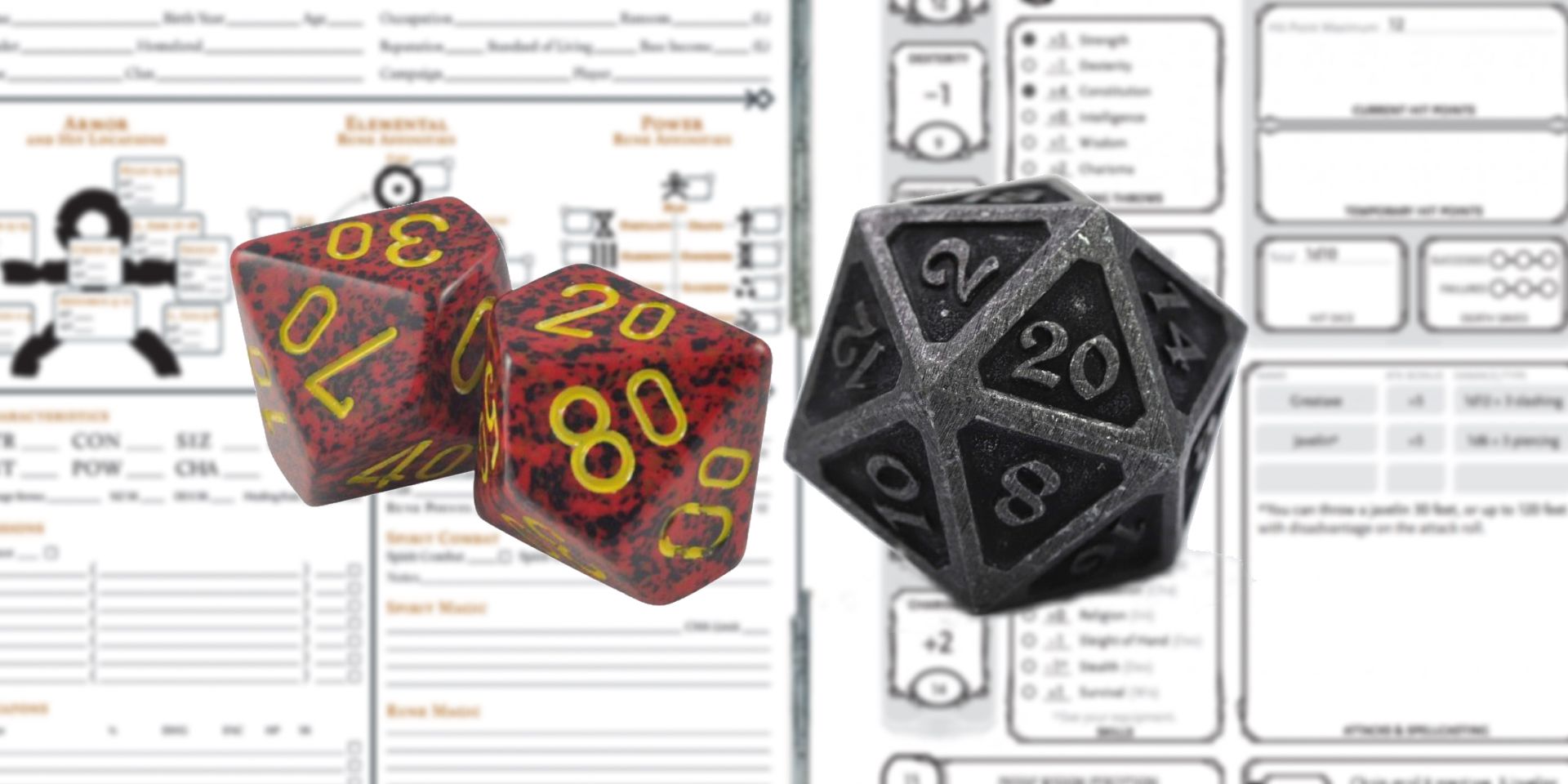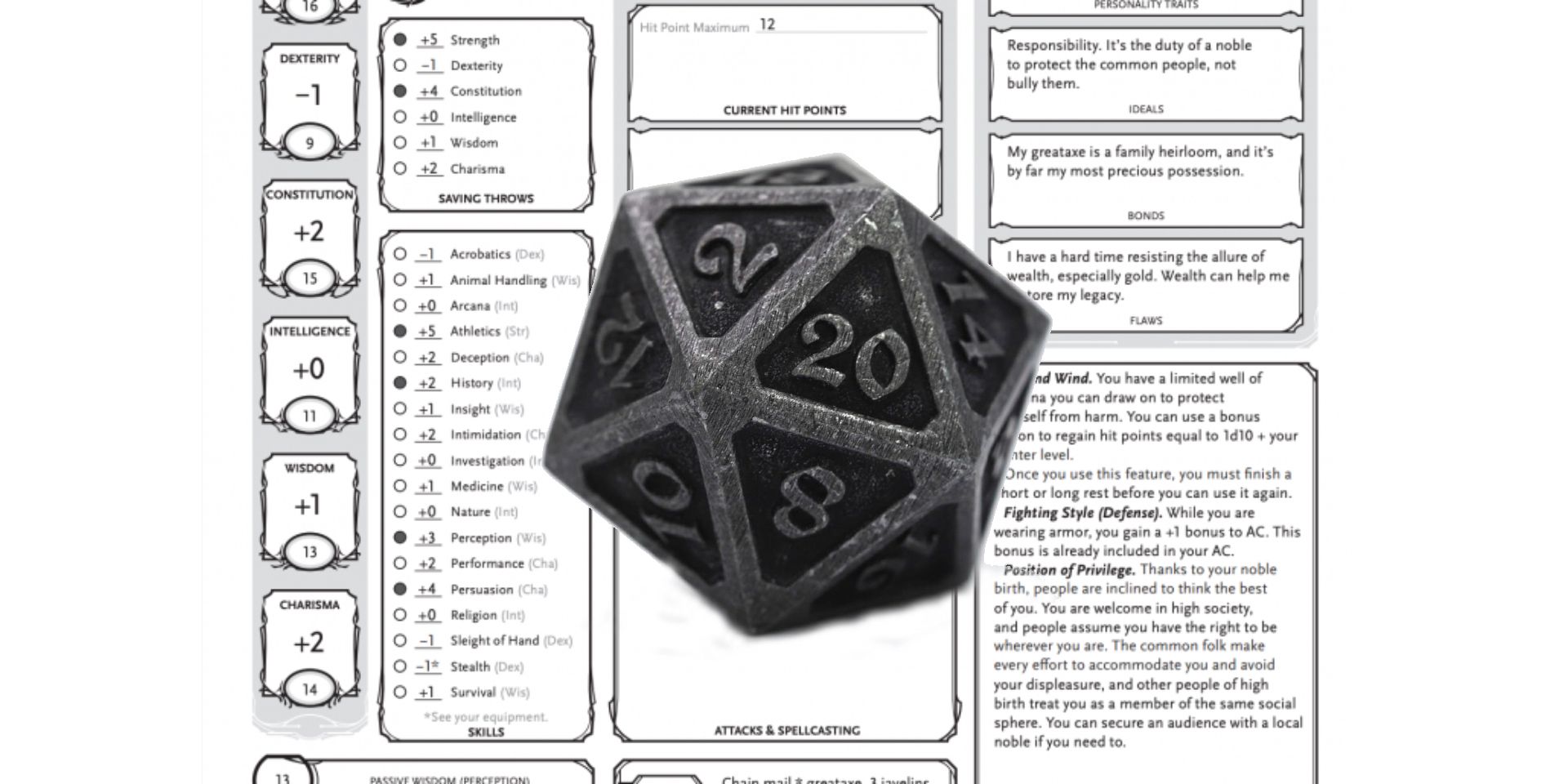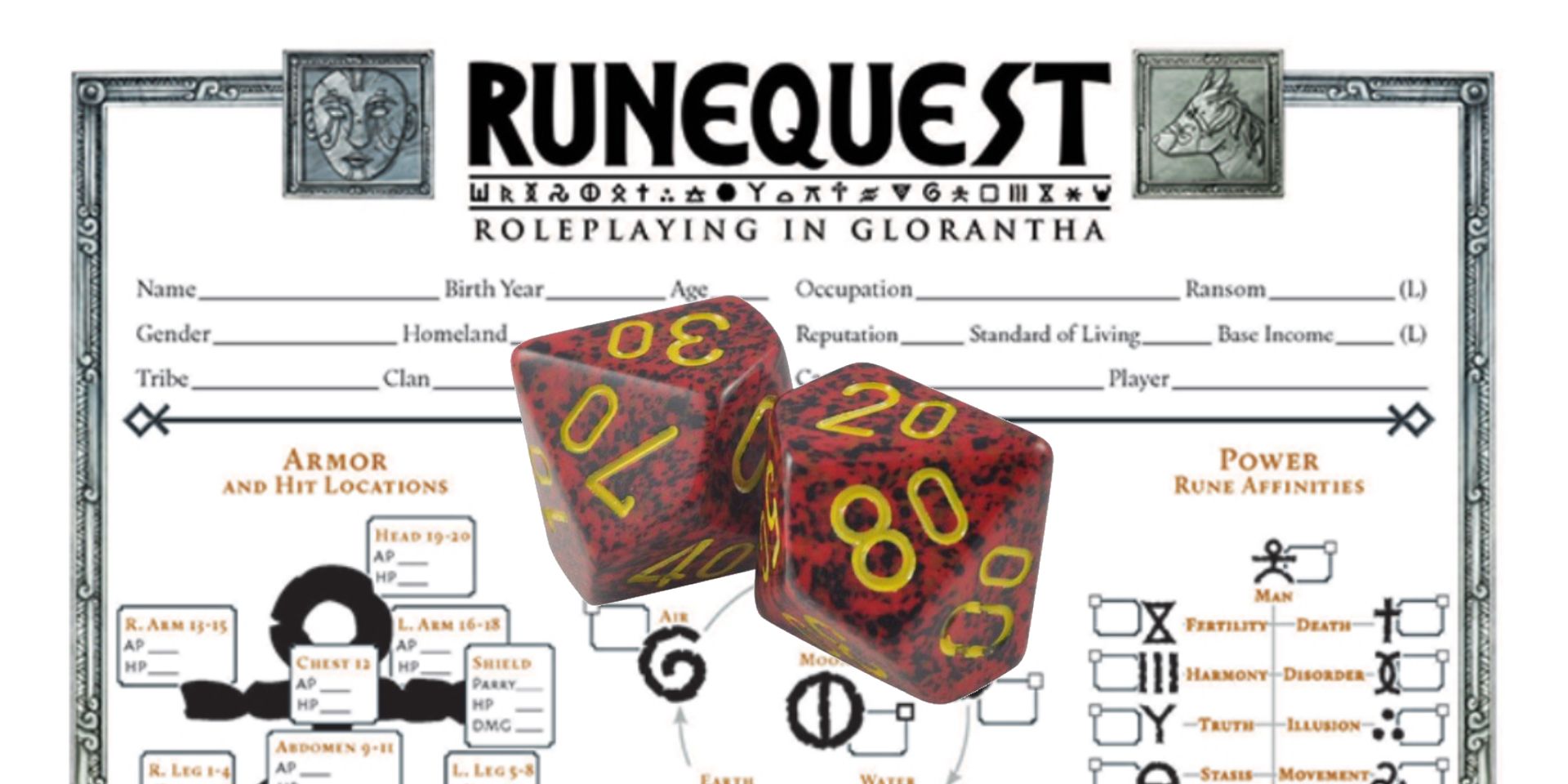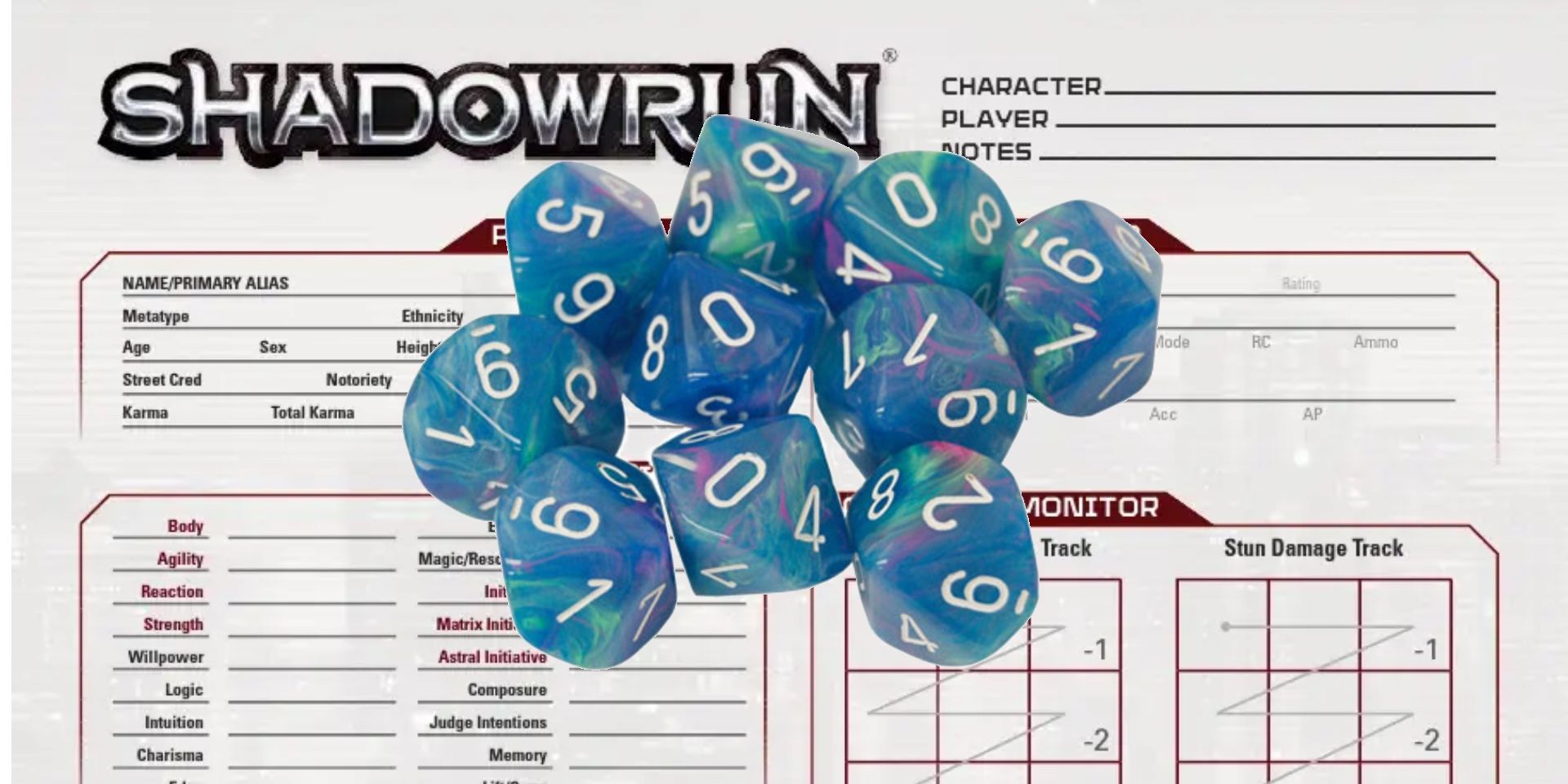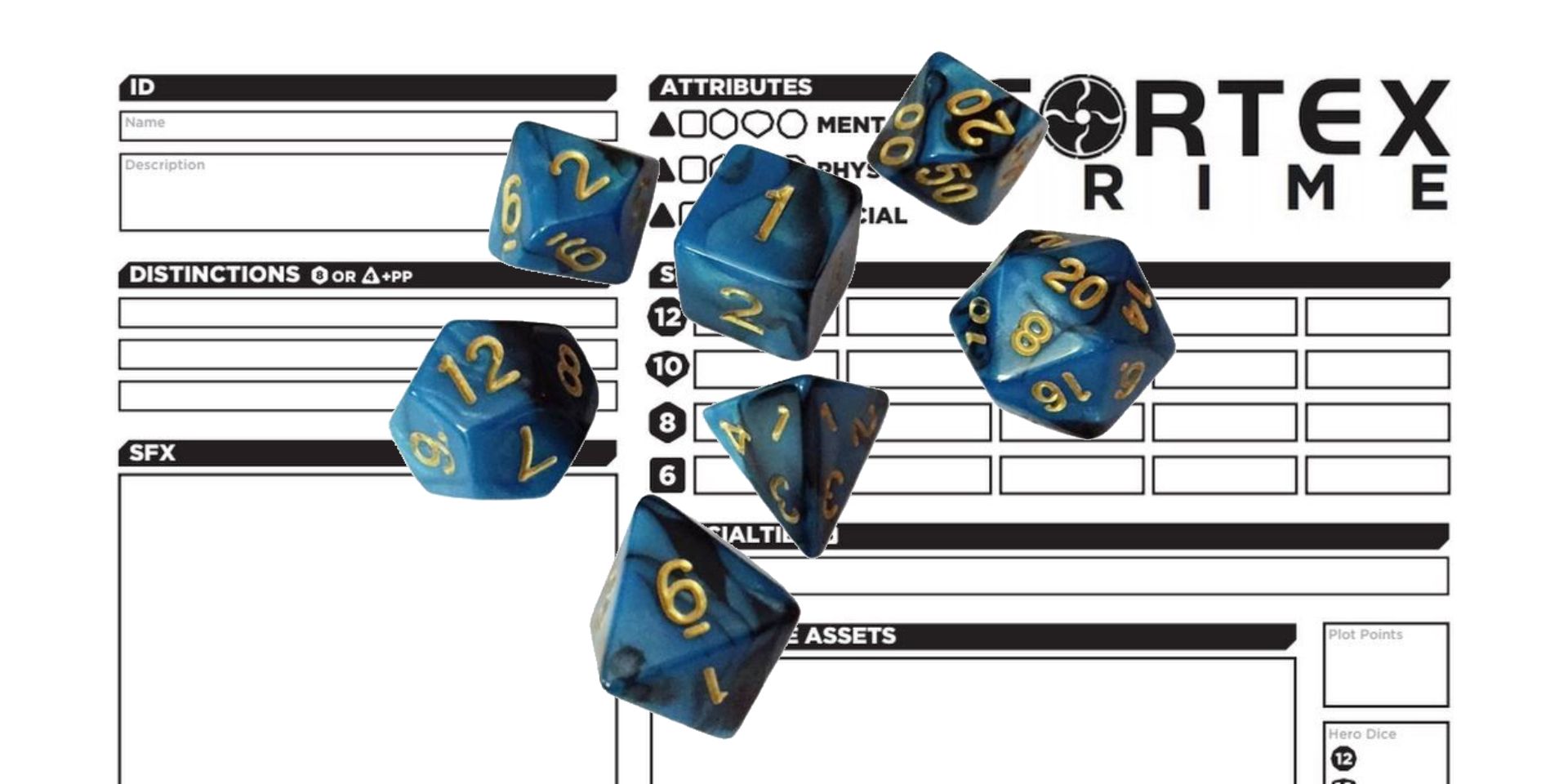Every tabletop RPG system comes with their own custom rules for deciding how well players characters take on challenges, and often those rules ask the player to roll dice. From the D20-centric system of Dungeons & Dragons to the handfuls of dice used in Shadowrun, dice rules for RPGs can be sorted into several categories - each with their own advantages and disadvantages when it comes to simulating tactical probabilities and creating interesting plot developments.
Dice have been a mainstay of gaming for a great part of human history, used to play games of chance and to govern the movement of pieces in ancient board games such the Egyptian game of Senet or the Royal Game Ur from old Mesopotamia. Some of the artifact dice recovered by archaeologists from this period were six-sided (referred to as D6 dice in modern parlance), while other polyhedral dice had four sides, eight sides, twelve sides, or even twenty sides - ancient versions of the D4, D8, D12, and D20 dice used by Dungeons & Dragons players to this very day.
Tabletop roleplaying games with dice (in contrast to RPGs with dice-less mechanics like playing cards) generally incorporate said dice into their rules for conflict resolution and challenges. RPG players don't roll dice for simple, mundane actions, but for dangerous, difficult deeds like picking a lock before the guard comes back or casting a volatile spell to banish a malevolent demon - in other words, junctures where success or failure will change the course of the game's story. By choosing what dice to roll and assigning certain outcomes to certain dice results, tabletop RPG designers, deliberately or otherwise, decide how often often and in what ways player protagonists see-saw between glorious triumph, utter disaster, and the myriad of outcomes between.
"Roll a Die And Add A Bonus" Like In Dungeons & Dragons
In many roleplaying system, players resolve skill checks, attacks, and the like by rolling a single dice - a twenty-sided die in Dungeons & Dragons games - then adding a flat numerical bonus such as +3 or +5. If the sum of the dice and bonus matches or exceeds a pre-determined difficulty number (10 often representing average difficulty) the player's characters succeeds at their challenge, and fails if they roll under.
The advantage and disadvantage of D20 systems like D&D is that every possible dice result has an equal (5%) chance of happening: this "variance" makes it easy for Dungeon Masters to quantify the difficulty of a challenge on the fly, but also leads to scenarios where player characters unexpectedly succeed at challenges seemingly beyond them or fail miserably at the easiest of tasks. RPG systems like FATE or "Powered By The Apocalypse," where players roll and add a bonus to multiple dice, have more of a "bell curve" of probabilities (as explained on the "Game Master Dice" website) where average dice results are more likely than "critical successes" or "critical failures."
"Roll Under With Percentile Die" Like In RuneQuest & Call Of Cthulhu
In "Percentile Dice" systems, frequently seen in Chaosuim games like RuneQuest or Call of Cthulhu, players will roll two ten-sided dice (abbreviated to D10s) then combine their two single digit numbers to make a double-digit number between 1 and 100 (these two D10s are collectively referred to as a D100).
Unlike in Dungeons & Dragons, players of percentile dice systems generally want to roll under a set number - either an ability score or a skill score with a rating of 20%, 75%, etc. Instead of rolling a die then adding a bonus, players of Percentile Dice RPGs will more often add bonuses or penalties to one of their skills, then roll the dice to see if they "roll-under" and pass. Generally, percentile dice systems thrive in "simulationist" games where RPG players want to look at their character sheet and swiftly grasp how good their character is at certain actions.
"Roll a Handful Of Dice" Like In Shadowrun & Vampire: The Masquerade
The Star Wars Roleplaying Game, released by West End Games in 1987, was one of the first RPGs to introduce a Dice Pool system - a ruleset where players resolve challenges by rolling handfuls of dice, rolling more dice the more skilled their characters are at a certain task. Late 1980s/early 1990s RPGs like Shadowrun and Vampire: The Masquerade swiftly adopted the concept of Dice Pools with a few tweaks, having players roll handfuls of dice equal to a combined attribute and skill score, then counting dice faces that match or exceed a certain number as "successes."
Systems where players roll handfuls of d6 dice usually count a 5+ result as 1 success, while systems with handfuls of D10s treat an 8+ as 1 success. Tabletop RPG players playing in these systems often enjoy the tactile sensation of clutching and tossing handfuls of dice, while Game Masters of dice pool RPGs can easily apply bonuses or penalties to skill rolls by adding or subtracting dice from the hands of their players. Dice Pool RPGs can become a bit complex during high-level campaigns, where players are trying to roll and count dozens of dice without spilling them off the edge of the table.
"Roll Dice Of Different Sizes" Like In Savage Worlds & Cortex
The dice systems of narrative RPG systems like Cortex and Savage Worlds are a sort of hybrid between the dice + bonus systems of games like Dungeons & Dragons and the dice pool systems of games like Shadowrun. In these games, players roll a small handful of dice and compare their results to a fixed difficulty number to determine success or failure.
Instead of adding a larger bonus or rolling larger quantities of dice, players in these systems will roll larger dice when using the stronger attributes and skills of their PC - rolling a an eight-side D8 die in place of a six-sided D6 die, for example. In systems like these, players can easily gauge the strength of their character at certain tasks by noting the size of the dice they roll; GMs however, might find it more difficult to gauge the probability curve of certain dice combinations without access to a chart or computer app.

